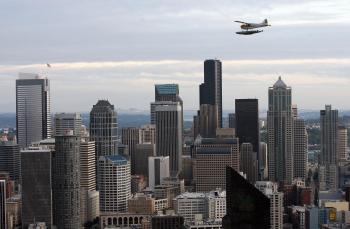When digital technology really started to have mass appeal some 20 years ago, many people thought the world would see the death of cities.
“People were so excited about virtual [reality] and the Internet and the ability to connect at a distance, that they thought that physical proximity wouldn’t matter anymore and cities would disappear,” said Carlo Ratti, director of SENSEable City Laboratory at the Massachusetts Institute of Technology (MIT), USA.
“Nothing could be more wrong,” Professor Ratti told the Australian Broadcasting Commission (ABC).
Around half of the world’s population now lives in cities. Digital technology, while creating new and sometimes problematic environments, can also be useful in “providing conditions to make our cities more alive and responsive,” he said.
Professor Ratti, an award winning architect, engineer, and designer, spends his time working between his architectural design company based in Turin, Italy and teaching at MIT.
At the SENSEable city lab, researchers are focused on how technology enables a better understanding of our built environment.
Using electronic output from mobile phones, Internet connections, and other electronic sensors, Professor Ratti’s students can map human behavior in new and innovative ways.
Some of the projects they have worked on are the design of an entirely digitally controlled pavilion at the 2008 Venice Biennale, mapping the direction and flow of information in and out of New York, and illustrating the “heartbeat” of Rome through an analysis of cell phone activity.
Tracking Waste
One of the latest projects which has been activated in Seattle, New York, and London is involved with tracking waste.
Researchers have developed thousands of little tags which are put on pieces of waste and then followed through the sanitation system.
The tags alone were an innovation as Global Positioning Satellites (GPS) would not work in a garbage truck, Professor Ratti said.
“So the way they work is called fingerprinting—the tag looks around to see what type of electromagnetic signature it sees around itself and then it will get its location based on this.
“So the tag does this and it’s like a small, small cell phone that then will send it out and broadcast its location.”
The incoming data from the tags is then classified into streams, which may or may not be toxic, as in the case of electronic waste like old computers or cell phones.
Once collated the main aim of the project is to look at the streams and analyze how they might be “optimized” in some way.
“In a certain sense it’s a study that’s similar to the supply chain study, it’s something we could call the removal chain study,” he said.
The data, which is available to the public, is also useful to illustrate to government departments and the cities’s residents, that this is what happens to their rubbish, in the hope of behavioral change and a more sustainable future.
“If the future is perhaps 5 or 10 or 15 years away, this future is about when smart electronics, other types of smart tags, will really allow us to track all of the waste management.”
Perhaps, with “a condition of 100% tracking,” we can also have “100% recycling” he said.






